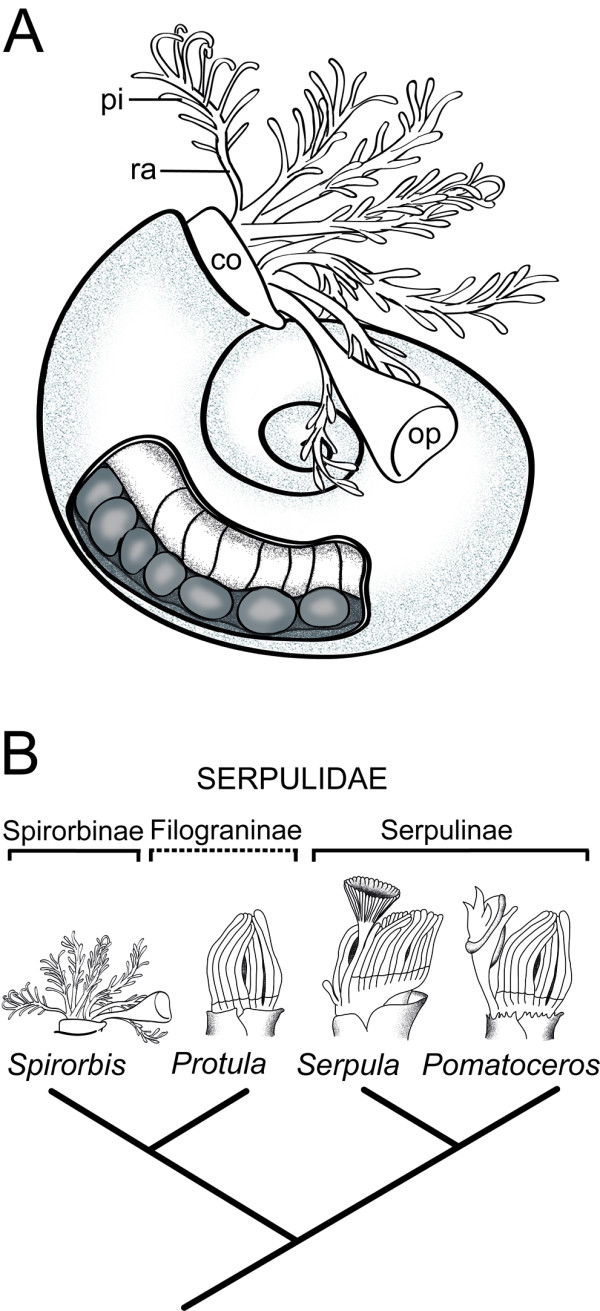Figure 1.

Serpulid morphology and phylogeny. (A) Schematic drawing of Spirorbis cf. spirorbis with the collar (co), the branchial crown consisting of radioles (ra) and pinnules (pi), and the operculum (op) protruding from the coiled shell. The latter is dissected open in the region of the anterior abdomen to unveil the membraneous tube surrounding the embryos. (B) Current hypothesis of serpulid phylogeny based on molecular analyses, with radiole and opercular morphology illustrated for each clade. Sketches redrawn after Kupriyanova et al. [21]. The Serpulidae consist of the Spirorbinae including Spirorbis and three new taxonomic entities referred to as the Protula-, Serpula-, and the Pomatoceros-clade. Thereby, some species of the former Serpulinae cluster within the Protula-clade that comprises all species of the former Filograninae.
